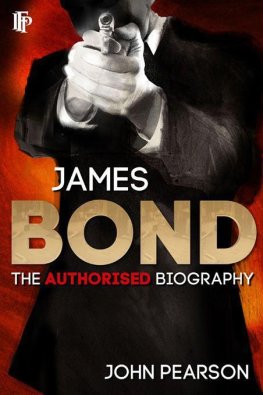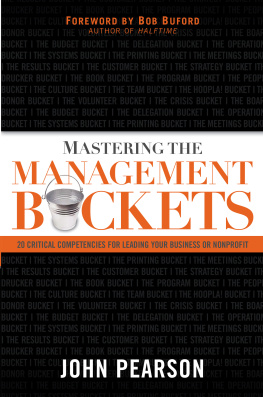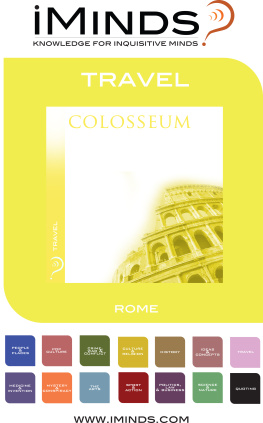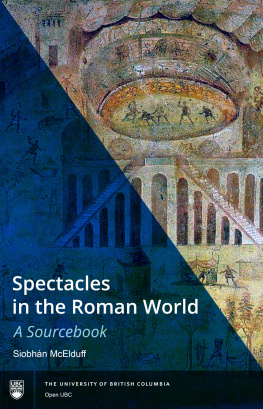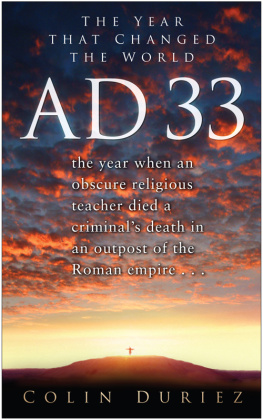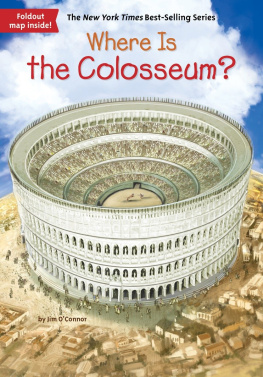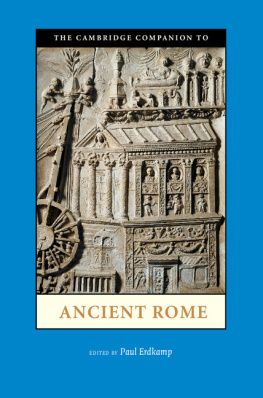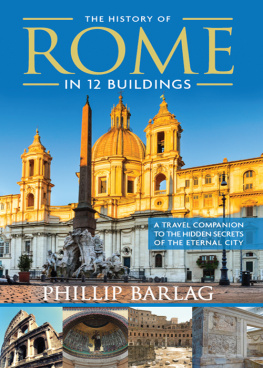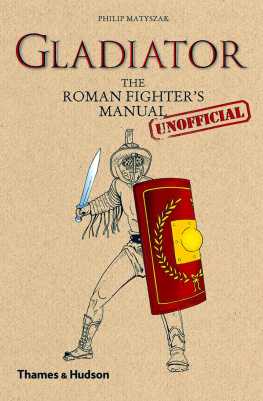John Pearson
Arena
The Story of the Colosseum

This electronic edition published in 2011 by Bloomsbury Reader
Bloomsbury Reader is a division of Bloomsbury Publishing Plc, 50 Bedford Square, London
WC1B 3DP
Copyright John Pearson
The moral right of author has been asserted
All rights reserved
You may not copy, distribute, transmit, reproduce or otherwise make available this publication
(or any part of it) in any form, or by any means (including without limitation electronic, digital,
optical, mechanical, photocopying, printing, recording or otherwise), without the prior written
permission of the publisher. Any person who does any unauthorised act in relation to this
publication may be liable to criminal prosecution and civil claims for damages
ISBN: 9781448207992
eISBN: 9781448207756
Visit www.bloomsburyreader.com to find out more about our authors and their books
You will find extracts, author interviews, author events and you can sign up for
newsletters to be the first to hear about our latest releases and special offers
Contents
In the year AD 80 the Colosseum opened with what must stand as quite the longest, most disgusting, organized mass binge in history. According to Suetonius, various sorts of largescale slaughter, both of animals and of men, were appreciatively watched by the Emperor Titus and a packed audience for the next hundred days. All this was considered highly laudable, an extra-special celebration of the state, duly enhanced by the presence of Roman senators, court officials, priests, vestal virgins and sacred effigies of the gods. The Emperor Titus was quite happily footing the enormous bill, just as he and his father, the imperial Vespasian, had already footed the bill for building this vast arena. Such payments were the privilege of power; the new arena was officially the gift of the Emperor to the Roman people and would ensure his fame for ever.
Not that this worked. Officially the arena was called the Flavian Amphitheatre, after the dynastic name of the Emperor, but several centuries ahead it would pick up its simpler and more lasting title. Ironically this name, which would erase all mention of the Flavians from popular memory, had originated with their hated predecessor, Nero. His colossal statue stood near the site of the arena. Rather than demolish it, Vespasian had ingeniously changed its head and its identity to that of Apollo, the sun god. And it was this colossus, with Apollos head, but built by Nero, that gave the arena its enduring name, the Colosseum.
The opening was a delirious affair, a mammoth celebration on the grandest scale. For something like six years Romes citizens had watched an army of skilled workmen draining the lake of Neros Golden House which occupied the site, preparing the immense foundations, then raising the walls. All this had started in the reign of Vespasian. That stingy but impressive Emperor was rebuilding Rome after the ravages of Neros fire. He was determined that his city should recover its ancient splendour as the worlds capital; the Colosseum, more than any other building, symbolized the massiveness, the power and sense of order of the new rgime. One of the last acts of Vespasians life was to dedicate it, proudly, in the year AD 79.
Titus succeeded him and piously continued work on the arena. From the scant evidence of the historians, Titus appears to have been one of the kindliest men to rule Rome. He is the emperor Suetonius describes complaining over supper of not having had a chance to do anyone a favour since the previous day. My friends, the Emperor exclaimed, I have wasted a day. And yet this kindly man shared his fathers passion for the arena. Work on the Colosseum had been hurried on, and he clearly could not wait for the shows to start. As it was, the Colosseum was not completely finished for these celebrations; its fourth and final storey was to be added in the reign of the next Emperor, the unspeakable Domitian, last of the Flavians.
Despite this, Titus had lavished money on it. It was a showpiece, and must already have possessed something todays bare ruins make it hard to picture a sense of ostentatious luxury. This was a vulgar age. Imperial Rome rejoiced in overdecoration and extravagance. The outside walls of the amphitheatre were plastered over the stonework, disguising the construction, niches were adorned with statues of the gods, the ceilings of the seventy-two public stairways were painted gold and purple, all inside walls were faced with marble.
Before this opening day, the audience had been well primed with advance publicity still further evidence that the occasion was regarded as a full-scale act of state. This build-up was important. Titus, like all successful Roman emperors, took his public relations seriously. The day had been proclaimed a public holiday. For weeks past there had been posters and announcements daubed on the walls of public buildings giving the names of star performers taking part, along with all the different spectacles offered by the Emperors generosity. On the actual day programmes were on sale. To make the opening more impressive still, Titus was set to make this an imperial festival. Suddenly Rome was full of foreigners, many invited from the furthest corners of the Empire and beyond. Rome could feel itself the centre of the world.
The poet Martial, faithfully echoing the official line, made much of this in flattering verses to the Emperor. Where do such people come from, Caesar, with the whole world now crammed into your city? Offhand he named a few the visitors from Rhodes, from Anatolia and from the upper reaches of the Nile, Arabs, Sabaean horsemen from Arabia Felix, pig-tailed Sicambrians, Abyssinians with matted hair all come to honour Caesar as their Lord.
The mood is reminiscent of Victorian England in its imperial heyday, with citizens of every corner of the Empire visiting London for the 1897 Jubilee. And this was very much the keynote of the opening ceremony, the Empire and the city honouring the Emperor. His approach was staged like a triumphal march, and for the audience the first they heard would have been the roar of the crowds outside as they caught sight of the imperial procession advancing down the Via Sacra.
Processions always had been something of a Roman speciality, a method of uniting the city in the excitement of a generals triumph, along with all the dignity of priests, gods and the Roman Senate. Since Caesars triumph after his Gallic Wars, the staging had grown steadily more elaborate. In a precinematic age, this was an unrivalled way of demonstrating one mans power and splendour to the greatest number, of imposing image upon ascending image of the emperors grandeur.
All the same, this procession of the Emperor Titus does seem a curious and tasteless hotch-potch. Its very incongruity offers a glimpse of the discordant elements within the emperors power. First came the emphasis on pure tradition the lictors, who from the days of the Republic had been the guardians of the consuls, bearing the fasces, the bound rods, symbol of their authority. Then followed a contingent of young boys, all of good family, specially chosen, according to Dionysius, so that the foreigners might freely see the flower of the citys youth, how fine and numerous they were. Knights sons rode horseback, the remainder marched. Then there were charioteers, then athletes. They introduced the gladiators, led by the andabati, mounted fighters, riding white Roman chargers, who in their turn were followed by fighting men, each in their different groups and with their different uniforms;
Next page

